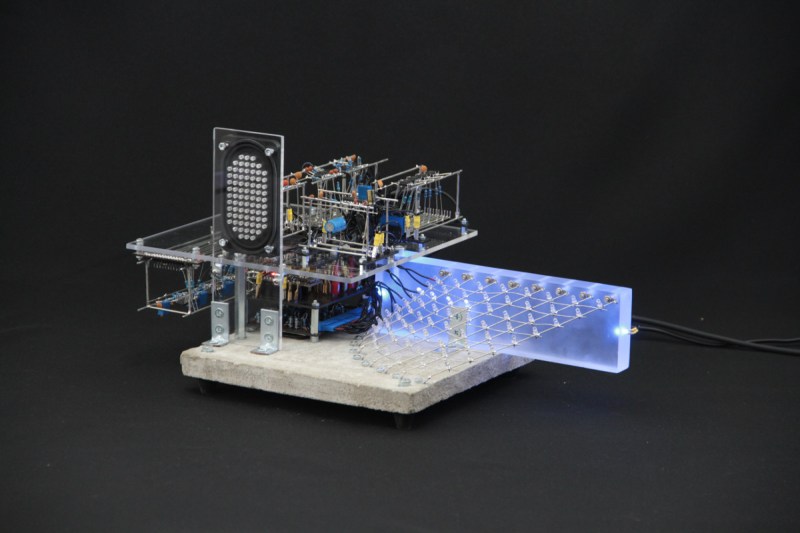The ESP32 has enabled an uncountable number of small electronics projects and even some commercial products, thanks to its small size, low price point, and wireless capabilities. Plenty of remote sensors, lighting setups, and even home automation projects now run on this small faithful chip. But being relegated to an electronics enclosure controlling a small electrical setup isn’t all that these tiny chips can do as [Eirik Brandal] shows us with this unique piece of audio and visual art.
The project is essentially a small, automated synthesizer that has a series of arrays programmed into it that correspond to various musical scales. Any of these can be selected for the instrument to play through. The notes of the scale are shuffled through with some random variations, allowing for a completely automated musical instrument. The musical generation is entirely analog as well, created by some oscillators, amplifiers, and other filtering and effects. The ESP32 also controls a lighting sculpture that illuminates a series of LEDs as the music plays.
The art installation itself creates quite haunting, mesmerizing tunes that are illustrated in the video linked after the break. While it’s not quite to the realm of artificial intelligence since it uses pre-programmed patterns with some randomness mixed in, it does give us hints of some other projects that have used AI in order to compose new music.
















I like the extremely solid base and the fact that the things that are mounted on top if it stick out in all directions. With their sharp corners poking around into the world, ready to hurt anyone who comes to close. But yet the base plate has 4 soft feet, so it will not damage the surface of whatever it is standing on. I find these kind of contrasts to be very interesting in many ways.
I believe the word you’re looking for is “art installation”
I believe the word you’re looking for is “juxtaposition” (“art installation” is two words).
Actually it’s nominal group, not juxtaposition, a nominal group is a juxtaposition, but the inverse is not true
“art installation” is still two words.
Great project, like that it’s analog synthesis powered by an ESP32, that it’s both a light and audio synthesizer and that it wears its stuff on the outside. 🤩 Really cool 😎,
Whenever I hear such as the above I am immediately reminded of the “Electronic Tonalities” in Forbidden Planet by Bebe and Louis Barron. Called “tonalities” because the Barrons weren’t members of the music union and so shouldn’t have made “music” for movies. Lawyers, harrumpf !
Always fascinated by machine generated music. Is any of this open source? I’ve had the idea of tonality generation controlled by environmental inputs sort of like wind chimes, with multiple units able to communicate and collaborate. Sort of like wind chimes. There’s more to the idea but that’s the short version. There’s a lot here that could be built on towards that.
same question here. want to make musical toy by using ESP32
There’s a typo in the title. Eirik Brandal Is the brain here.